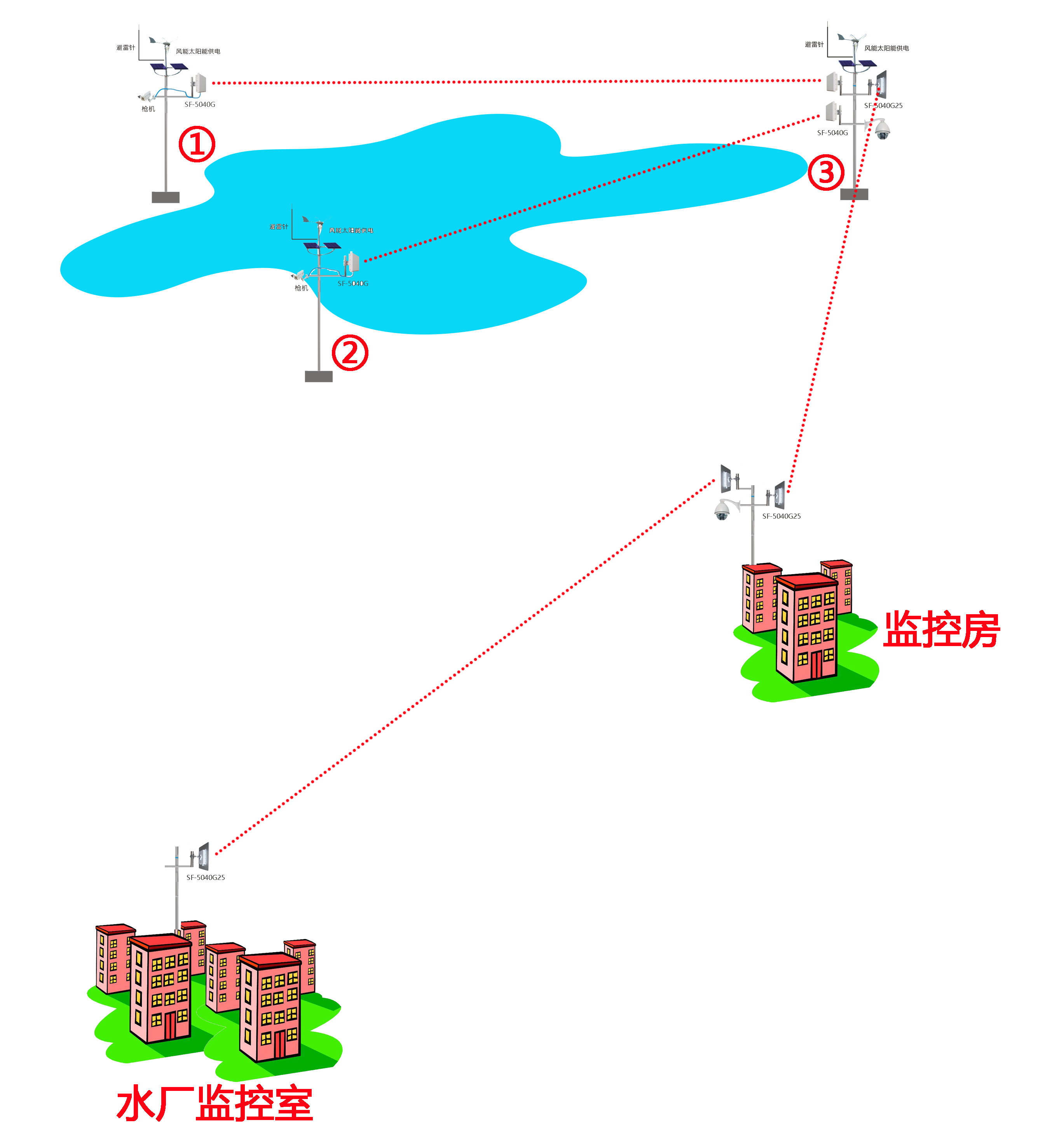Digital Wireless Transmission Scheme for Video Surveillance in Water Source Areas
Shannan is a prefecture level city under the jurisdiction of the Xizang Autonomous Region. It is located between 90 ° 14 ′ -94 ° 22 ′ E and 27 ° 08 ′ -29 ° 47 ′ N. It is located in the south of Gangdise Mountain to Nyainqen Tanggula Mountain, in the middle and lower reaches of the Yarlung Zangbo River, in the north of Xizang's capital Lhasa, in the west of Shigatse, in the east of Nyingchi, in the south of India and Bhutan. Shannan has a boundary line of more than 600 kilometers long, which is a very important strategic location. With an average altitude of 3700 meters, it is called "the valley of southern Tibet", and is the southwest border of China.
Because of Xizang's special geographical environment, drinking water resources are particularly valuable, and the protection of water sources is also imperative.
The National Water Resources Monitoring Capacity Building Project of the Xizang Autonomous Region was launched in 2015, mainly to carry out three construction projects, namely, water intake monitoring system, water function area control system, and water resources monitoring and management information platform, to support the implementation of the strictest water resources management assessment in Tibet. However, the previously used wired fiber optic cables had many problems due to the difficulty of construction, shallow burial, and short usage time. The cables were damaged by wild animals and could not continue to be used. If the wired fiber optic cables were to be laid again, the construction period would be too long, requiring a lot of manpower, material resources, and financial resources. Therefore, a short construction period and convenient transmission method are required. Based on this, our company recommends users to use wireless transmission solutions.
2、 Scheme thinking and design
The user's use site is in Shannan City, Xizang Autonomous Region, which is mainly used to monitor the surrounding conditions of the water source. The three monitoring points at the front end have no mains power and need to use solar power. Three monitoring points need to be transmitted to the monitoring center. As the three monitoring points cannot be directly seen from the monitoring center, they need to be relayed once. At the same time, there is also a path of images that need to be transmitted to the monitoring center at the relay point. The scene is shown in the following figure:

At the user's site, points 1, 2, and 3 are water source monitoring points. Point 1 is equipped with a high-definition digital gun camera, and the video signal is first transmitted to point 3; Install a high-definition digital gun shaped camera on the 2nd, and transmit the video signal to the 3rd point first; Install a high-definition digital dome camera on the 3rd, and use a switch to aggregate the other two video signals. After aggregation, as it is not possible to directly see the water plant monitoring, it is first transmitted to the monitoring room, then connected to the video signal of one dome camera, and finally transmitted to the water plant monitoring room uniformly. Based on the actual on-site needs of users, we recommend using our company's ST5040G and ST5040G25G products. SF-5040G is used for short-range transmission, SF-5040G25 is used for long-range point-to-point wireless transmission, and points 1, 2, and 3 are equipped with solar and wind complementary power supply systems because they do not have mains power. The topology diagram of using wireless devices for transmission on site is shown below:

3、 Specific plan implementation and configuration
Due to the unique installation location of the user, with an average altitude of over 4200 meters, specific explanations will be provided for each point in the following implementation instructions:
1. The main installation includes a network gun, an SF-5040G digital wireless bridge, and a solar wind power complementary power supply system. According to calculations, the power consumption of point 1 is approximately 40W. Based on the local sunshine hours and rainy days, the required solar panel power is calculated to be 300W. In order to ensure normal operation on rainy days, a wind power generation system is also installed as an effective supplement to solar power supply.
2. The situation at monitoring point 2 is exactly the same as that at monitoring point 1, so we can refer to the situation at monitoring point 1, where the equipment configuration and quantity are the same.
3. The situation at monitoring point 3 is different from the previous two points. This point uses a lot of equipment, including three digital wireless bridges and one network dome camera. Two of the bridges are SF-5040G, which receive video signals from points 1 and 2 respectively. The other network SF-5040G25 digital wireless bridge serves as the transmitting device, transmitting three video signals to the monitoring room of the relay point. According to the equipment situation, the user power consumption at this point is calculated to be 60W. Based on the local sunshine hours and rainy days, the required solar panel power is calculated to be 600W. In order to ensure normal operation on rainy days, a wind power generation system is also equipped as an effective supplement to solar power supply.
4. The on-site situation of the relay point monitoring room is shown in the figure on the right:
The relay point monitoring room needs to receive three video signals transmitted from point 3, and at the same time, it needs to aggregate one local video signal with a switch before transmitting it to the water plant monitoring room. Due to the availability of mains power, there is no need to install a separate solar power supply system. Due to being a two-story building, the height of the relay point may not be sufficient. In order to ensure better wireless transmission performance, it is recommended that users build a small platform on the roof where wireless devices can be installed.
5. The main function of the water plant monitoring room is to install a wireless device to receive video signals from the front-end, and install an NVR in the monitoring room to view and store the front-end video images. The NVR in the monitoring center is equipped with a 2TB storage hard drive, which can meet the recording needs of 4 monitoring images for 15 days.


